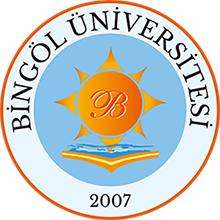BİNGÖL’ÜN FARKLI LOKASYONLARINDAN ELDE EDİLEN Crataegus orientalis (DOĞU ALICI) MEYVESİNİN BAZI BİYOKİMYASAL DEĞERLERİNİN TESPİT EDİLMESİ
Abstract
ÖZET
Crataegus orientalis, Akdeniz bölgesi, Türkiye ve İran bölgelerinde yetiştirilen; sarı, kırmızı, turuncu renkli meyvelere sahip olan bir alıç çeşididir. Özellikle ülkemizde ve Doğu Anadolu’da sonbaharda sevilerek tüketilen bir meyvedir. Bingöl de bu meyveyi severek tüketen ve bu alıç türünün şifalı olduğuna inanan bir coğrafyadır.
Crataegus orientalis (Doğu alıcı) 2021 yılı eylül ayında Bingöl’ün farklı 3 lokasyonundan temin edildi. Kimyasal analizler olarak bazı önemli element düzeyleri ve bazı antioksidan testleri yapıldı. Analizi yapılan elementlerden sodyum 13073 ile 298803 ppb arasında, magnezyum 119538 ile 432871 ppb arasında, potasyum 2078624 ile 4821872 ppb arasında, kalsiyum 25190 ile 1623360 ppb arasında, mangan 1633 ile 99714 ppb arasında, demir 1567 ile 57778 ppb arasında, kobalt 1 ile 117 ppb arasında, bakır 557 ile 1516 ppb arasında, çinko 1121 ile 4303 ppb arasında, selenyum 6 ile 9 ppb arasında tespit edilmiştir. Çok zengin miktarda element içeriğine sahip olduğu gözlenmiştir. Antioksidan test sonuçları şu şekilde gözlenmiştir; toplam fenol İçeriği 79,76 ± 0,95 mg gallik asit g-1, toplam flavonoid içeriği 43,04 ± 1,67 mg kuersetin g-1, toplam antioksidan kapasite 203,76 ± 12,28 mM askorbik asit g-1, DPPH radikali süpürme kapasitesi 61,6 ± 0,57 % inhibisyon.
Doğu alıcı zengin element içeriği, kuvvetli antioksidan değerlerinin yanı sıra lifli bir gıda olması ile de sağlık açısından faydalı bir meyvedir. Birkaç hafta gibi yılın sadece sınırlı zaman zarfında yetişen ve tüketilen bu meyvenin değerinin anlaşılması toplum sağlığı açısından faydalı olacaktır. ABSTRACT
Crataegus orientalis, grown in the Mediterranean region, Turkey and Iran; It is a variety of hawthorn with yellow, red, orange colored fruits. It is a fruit that is loved and consumed especially in our country and Eastern Anatolia in autumn. Bingöl is a geography that loves to consume this fruit and believes that this hawthorn species is medicinal.
Crataegus orientalis (East hawthorn) was procured from 3 different locations in Bingöl in September 2021. As chemical analysis, some important element levels and some antioxidant tests were performed. Among the analyzed elements, sodium is between 13073 and 298803 ppb, magnesium is between 119538 and 432871 ppb, potassium is between 2078624 and 4821872 ppb, calcium is between 25190 and 1623360 ppb, manganese is between 1633 and 99714 ppb, iron is between 1567 and 57778 ppb, cobalt is between 1 and 117 ppb. Among them, copper was found between 557 and 1516 ppb, zinc between 1121 and 4303 ppb, and selenium between 6 and 9 ppb. It has been observed that it has a very rich amount of element content. The antioxidant test results were observed as follows; total phenol content 79.76 ± 0.95 mg gallic acid g-1, total flavonoid content 43.04 ± 1.67 mg quercetin g-1, total antioxidant capacity 203.76 ± 12.28 mM ascorbic acid g-1, DPPH radical scavenging capacity 61.6 ± 0.57 % inhibition.
It is a fruit that is beneficial for health with its rich element content, strong antioxidant values, as well as being a fibrous food. Understanding the value of this fruit, which is grown and consumed only during a limited time of the year, such as a few weeks, will be beneficial for public health.
Collections
- Kimya [56]

DSpace@BİNGÖL by Bingöl University Institutional Repository is licensed under a Creative Commons Attribution-NonCommercial-NoDerivs 4.0 Unported License..













